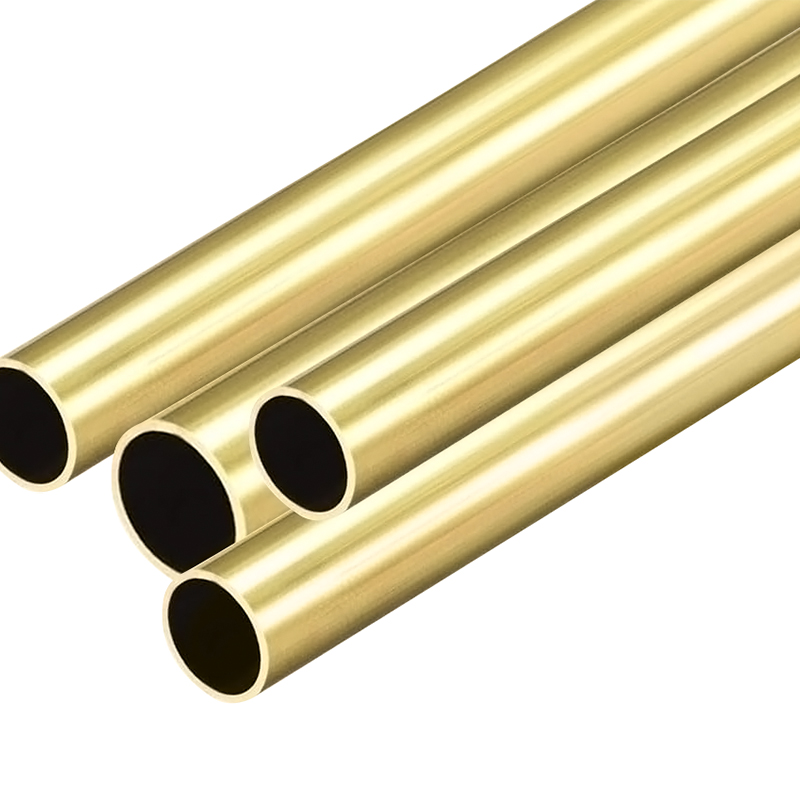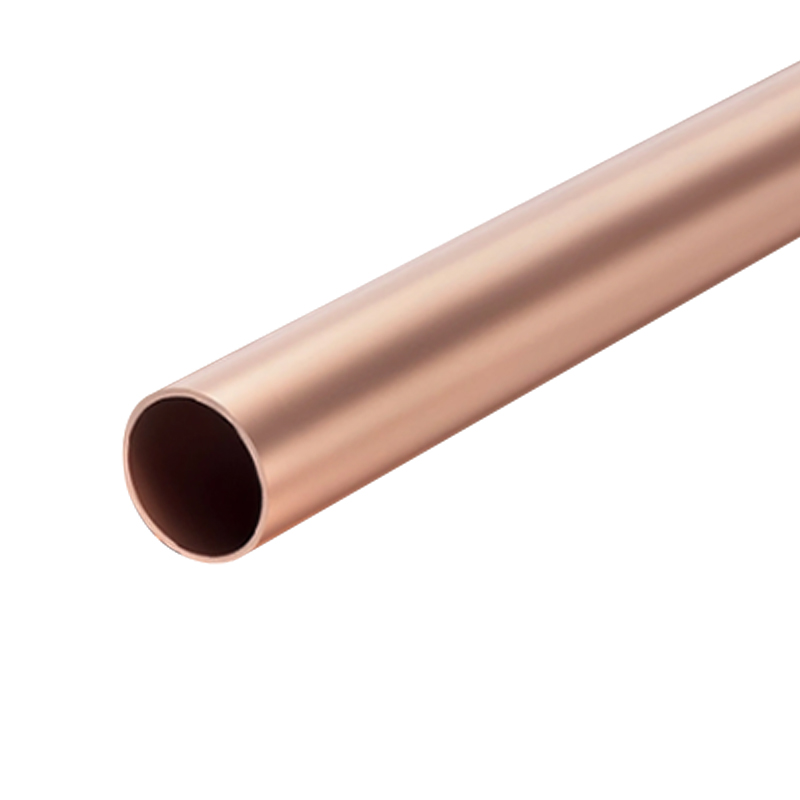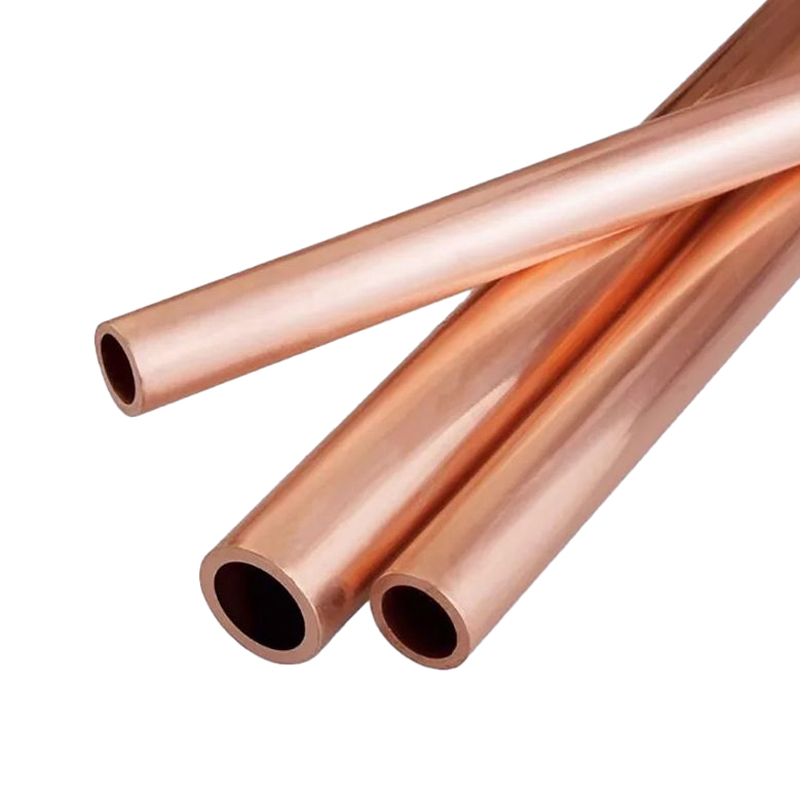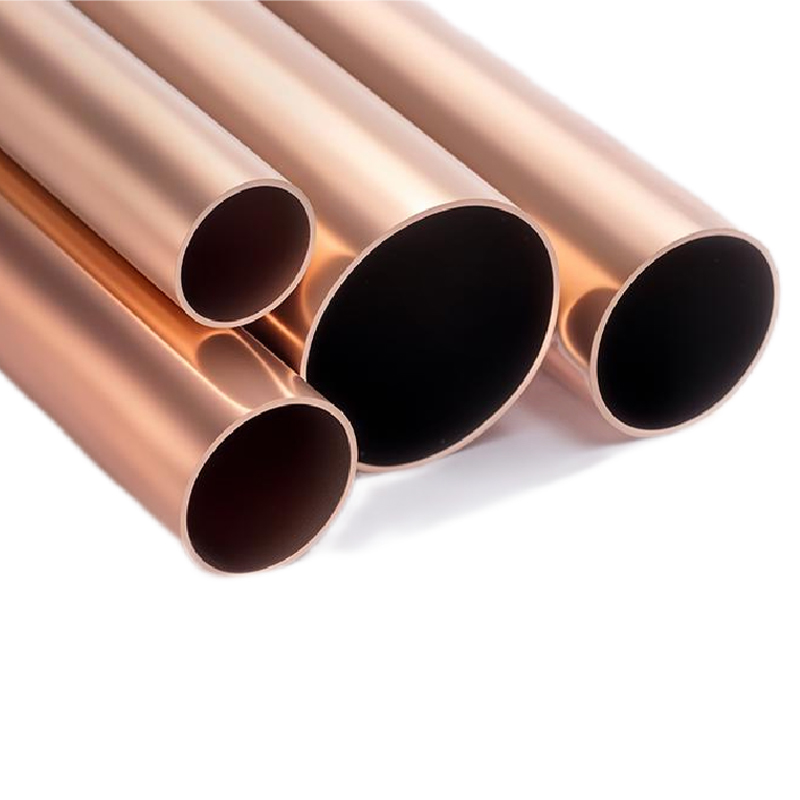Brass is an alloy of copper and zinc. It has good processing and mechanical properties, so it is widely used in the manufacture of tubes.
Because it has good corrosion resistance, thermal conductivity, and electrical conductivity, and has plasticity and sealing.
Based on these characteristics, brass tubes have been widely used in construction, industry, electrical, manufacturing, and medical fields.
Whether it is water supply, heating, gas supply, electrical equipment, or manufacturing handicrafts, brass tubes play an important role
Our company mainly produces three grades of brass tubes: T27600(H62)、T27300(H63)、C27000(H65). The difference is mainly reflected in the zinc content
The brass tubes that our company can produce have an outer diameter OD: 1.8-80mm and a wall thickness TH: 0.3-12mm
ABOUT US
30+YEARS OF
EXPERIENCE
About Us
A Reliable Partner of the Copper Tube Industry
Zhejiang Jingliang Copper-Tube Products Co., Ltd established in 1994, is China Brass Tube Manufacturers and Custom Brass Round Tube Suppliers, has been deeply involved in the copper tube industry for over three decades. The company primarily produce various specifications of products such as copper tubes, brass tubes, copper square tubes, fin copper tubes, copper capillary tubes, condenser copper tubes, copper evaporator tubes, and conductive rods, which are of quality and have earned the trust and acclaim of customers both domestically and internationally.
Wide Applications:
These products are widely used in various fields including air conditioning, refrigeration, heat exchange, sanitary ware, automotive, machinery, electric furnaces, and chemical industries.
Convenient Transportation:
Strategically located in Tangpu Town, renowned as the “home of copper tubes” in East China. Our company enjoys a prime location, adjacent to the Shangsan Expressway and National Highway 104, and is conveniently situated just over 70 kilometers from Hangzhou and Ningbo, ensuring easy accessibility and a business position.
Strong Financial Resources:
With its strong financial resources and advanced copper tube processing technology, our company holds an advantageous position in market share, brand value, technological content, and product quality, becoming a preferred supplier for many listed groups.
Large Scale Production:
The company occupies an area of over 20,000 square meters, with a construction area of 12,800 square meters. In 2022, our annual production exceeded 7,500 tons, with a value output of up to 450 million yuan, demonstrating our strong production capacity and market competitiveness.
Comprehensive Industry Chain:
Jingliang has now developed into a complete industrial chain integrating smelting, extrusion, drawing, precision rolling, and annealing. It has been awarded multiple honors, including "Top Ten Copper Tube Enterprises" and "Leading Taxpayer in the Copper Tube Industry".
Smart Manufacturing:
Jingliang Copper-Tube Products will better integrate the concept of factory construction into its corporate development strategy, insist on refining technology and polishing products more finely, and the future of "intelligent manufacturing".
Genuine Cooperation:
Zhejiang Jingliang Copper-Tube Products Co.,Ltd warmly welcomes friends from all walks of life to visit and offer guidance. We look forward to joining hands with you to create a brilliant future together.
Technical skills
Production Process
- 1、Electrolytic Copper
- 2、Copper Ingots
- 3、Press
- 4、Drawing
- 5、Rolling
- 6、Packaging
Electrolytic copper, produced through electrolytic processes, is a high-purity copper with good electrical conductivity and thermal conductivity, making it an ideal material for manufacturing copper pipes.
This marks the beginning of our production process, which involves the fabrication of electrolytic copper into pure copper or brass ingots according to specific requirements, followed by cutting to facilitate subsequent processing and handling.
In the pressing stage, the cut copper ingots are pressed into thin sheets or tubular shapes, forming the initial tube shape, and the copper ingots are prepared for drawing and rolling.
Drawing is the process of further processing the copper sheets or tubular objects that have been pressed into the required dimensions and shapes. Through drawing, our copper tubes can achieve precise outer diameters and wall thicknesses.
Rolling is the step of further processing the copper tubes after drawing. Through rolling, the copper tubes are rolled into more precise dimensions and shapes to meet the requirements of different applications.
Finally, the copper tubes that have undergone rolling will be packaged and prepared for shipping. We ensure that the packaging is safe and protective to prevent damage during transportation.
News
-
Copper Tube Industry Segmentation Report: How Are Niche Markets Reshaping the Competitive Landscape?
Subtitle: While traditional copper tubes grapple with price wars, segments like semiconductor-grade oxygen-free copper tubes and ultra-thin wall tubes for new energy vehicles achieve 30%+ gross margins—how do these niche products, represent...
READ MORE -
In the world of heat exchangers, air conditioning systems, refrigeration units, and other thermal management applications, the choice of materials for the tubes that facilitate heat transfer is crucial. Copper and aluminum are two of the mo...
READ MORE -
Refrigeration systems are essential in modern-day life, from preserving food and medicine to maintaining the comfort of our homes and workplaces. One of the key components that ensure the efficient operation of these systems is the capillar...
READ MORE
Industry knowledge
What defects are prone to occur in brass tubes during welding?
Brass tubes, as copper-zinc alloy materials, are widely used in air conditioning and refrigeration, heat exchange equipment, automobiles, machinery manufacturing and other fields due to their good mechanical properties, corrosion resistance and processing adaptability. Welding is a key link in brass tube forming and system integration, and its quality is directly related to the sealing, strength and service life of the overall equipment. However, due to the material properties of brass, it is very easy to have various defects during welding.
Common defects in brass tube welding
1. Porosity caused by zinc evaporation
The biggest problem of brass in the welding process comes from the high vapor pressure of zinc. Under high-temperature welding conditions, the zinc in brass evaporates rapidly to form zinc vapor. If it cannot be discharged in time or is not adequately protected, pores will be formed. This defect will weaken the density of the weld and cause leakage risks, especially in air conditioning or condensation systems, which can easily cause system failure.
2. Hot cracks and cold cracks
During welding, when the thermal stress exceeds the plastic limit of the material itself, cracks are very likely to occur in the weld or heat-affected zone. Due to the component segregation and grain boundary embrittlement caused by zinc evaporation, the risk of hot cracks is particularly prominent in brass welding. If the cooling rate is not properly controlled during the cooling process, cold cracks may also occur, reducing the overall strength of the product.
3. Incomplete fusion and incomplete penetration
Brass has extremely strong thermal conductivity, and heat is easy to diffuse rapidly during welding. If the heat input is insufficient or the welding speed is inappropriate, the weld metal and the parent material may not be fully fused, resulting in incomplete fusion or incomplete penetration. This will directly lead to insufficient welding strength and affect the pressure bearing capacity of the equipment.
4. Appearance defects such as undercut and weld nodules
Due to improper welding operation, unreasonable welding parameter settings or irregular groove design, brass welds are also prone to forming defects such as undercut (the edge of the weld is lower than the surface of the parent material) or weld nodules (excessive accumulation of welds), which not only affects the appearance quality, but also induces stress concentration in subsequent use and affects durability.
How to effectively avoid welding defects
Zhejiang Jingliang Copper-Tube Products Co., Ltd adheres to the concept of "quality-oriented, technology-driven" and is always committed to optimizing welding quality. In order to effectively avoid brass tube welding defects, the company implements systematic control from multiple links.
1. Material quality control
The company relies on its own complete industrial chain (including smelting, extrusion, drawing, precision rolling and annealing) to control the stability of brass components from the source, optimize the zinc content ratio, and make the zinc evaporation amount controllable during welding, laying the foundation for reducing pores and thermal cracks.
2. Surface pretreatment
Before welding, it is necessary to ensure that the surface of the welding area is clean and free of oil and oxides. Zhejiang Jingliang adopts a multi-stage chemical cleaning + mechanical polishing process to remove all surface residues that affect the welding quality and improve the fusion effect.
3. Welding process optimization
Select appropriate welding methods: Zhejiang Jingliang widely uses argon arc welding (TIG) and copper-based brazing in the welding process to ensure that the weld is flat and dense.
Accurate heat input control: By introducing an intelligent welding parameter control system, the current, voltage and welding speed are adjusted according to the specifications and wall thickness of the copper tube to prevent overheating and large-scale zinc evaporation.
Application of protective atmosphere: Use high-purity argon gas for effective protection in the welding area to prevent air from entering the weld area, reduce oxidation reaction and pore formation.
What is the effect of the wall thickness and diameter of brass tubes on their pressure resistance?
In modern industrial systems, brass tubes are widely used in air conditioning, heat exchangers, auto parts, bathroom hardware, machinery manufacturing and other industries due to their excellent corrosion resistance, thermal conductivity and good processing performance. In actual application, the pressure resistance of brass tubes is one of the key indicators for evaluating their quality and safety, which is directly related to the operating reliability and service life of the equipment.
The effect of wall thickness on the pressure resistance of brass tubes
1. The thicker the wall thickness, the stronger the pressure bearing capacity
The pressure resistance of brass tubes mainly comes from the ability of their tube walls to resist the stress generated by internal pressure. Under the condition that other conditions remain unchanged, the increase in wall thickness can significantly increase the strength of the pipeline, reduce the stress value under the action of internal pressure, and thus improve the overall pressure resistance level. The tensile strength and allowable stress calculation formula is often used in engineering:
P = 2σt / D
Where:
P: Maximum working pressure
σ: Allowable stress of the material
t: Tube wall thickness
D: Outer diameter
As can be seen from the formula, the wall thickness (t) is proportional to the pressure (P). For every 1mm increase in wall thickness, the maximum pressure bearing capacity of the system will be greatly improved. Therefore, in high-pressure systems (such as refrigeration compressors and chemical high-pressure pipelines), thick-walled brass tubes are usually used to ensure system safety.
2. Excessive wall thickness also needs to weigh the use scenario
Although the increase in wall thickness can enhance the pressure resistance, it will also bring about problems such as increased weight, increased material costs and increased processing difficulty. Therefore, scientific selection must be made according to the actual needs of the system. Zhejiang Jingliang Copper-Tube Products Co., Ltd has formed customized wall thickness design solutions for air conditioning, heat exchange, chemical, automotive and other industries in many years of industry service, which not only meets the pressure resistance requirements, but also optimizes cost control, and is widely recognized by customers.
Effect of diameter on the pressure resistance of brass tubes
1. The larger the outer diameter, the lower the pressure resistance
From the above formula, it can be seen that the larger the outer diameter D of the pipe, the smaller the internal pressure P that can be borne by the unit wall thickness. Because the larger the outer diameter, the greater the hoop stress (i.e., Hoop Stress) borne by the pipe wall per unit length, which can easily cause material deformation or even rupture. Therefore, in high-pressure systems, small-diameter brass tubes generally have a higher upper pressure resistance limit.
2. Advantages of small-diameter tubes in high-precision systems
Take the capillary copper tubes in air-conditioning condensing systems and precision instruments as an example. The diameter is usually only a few millimeters or even smaller. This type of pipe can not only withstand high pressure, but also has better adjustment ability and response speed. The brass capillary tubes produced by Zhejiang Jingliang are widely praised by precision equipment manufacturers at home and abroad for their high consistency and excellent internal and external surface quality.
Matching design strategy of wall thickness and diameter
In practical applications, wall thickness and outer diameter are not independent variables, but need to be comprehensively designed in combination with the use environment, working pressure, medium type and temperature. For example:
In the air-conditioning industry, copper tubes must ensure the stable transmission of refrigerant at high pressure and have good flexibility, and medium wall thickness + small diameter combination is often used.
The chemical industry has high requirements for both pressure and corrosion resistance, and large wall thickness + medium and small diameter brass tubes are preferred.
In the automotive braking system, small diameter and thick wall copper tubes are used to ensure that they can cope with complex working conditions.
Zhejiang Jingliang Copper-Tube Products Co., Ltd, with its complete industrial chain and independent research and development capabilities, can provide brass tubes of various specifications ranging from Φ1mm to Φ80mm outer diameter and from 0.3mm to 5.0mm wall thickness according to customer needs, and provide customers with professional selection and pressure resistance performance evaluation suggestions to achieve a balance between material performance and use cost.
What is the main role of brass tubes in air-conditioning and refrigeration systems?
In modern life and industrial environments, air-conditioning and refrigeration systems have become an indispensable infrastructure, playing a vital role in scenes such as homes, office buildings, industrial plants, and commercial cold chains. In this system, copper tubes, especially brass tubes, as the core channel for refrigerant circulation and heat exchange, not only bear multiple functions such as pressure bearing, heat conduction, sealing and connection, but also are an important guarantee for system stability, safety and energy efficiency.
The core role of brass tubes in air conditioning and refrigeration systems
1. Refrigerant delivery channel to ensure system circulation efficiency
The core of the air conditioning system is the circulation and phase change of the refrigerant. Between the evaporator, condenser, compressor and throttling element, the refrigerant continuously converts between liquid and gas and circulates through pipes. Brass tubes have good sealing and corrosion resistance and become the preferred material for refrigerant transmission, especially in the links of diversion, connection, pressure conversion, etc.
The brass tubes produced by Zhejiang Jingliang have excellent inner wall finish and dimensional accuracy, which can effectively reduce fluid friction loss, improve refrigerant circulation efficiency, reduce energy consumption, and improve the overall operation performance of the system.
2. Precision control and distribution: the core role of capillary brass tubes
In air conditioning, the refrigerant enters the low-pressure state from the high-pressure state through the throttling device to achieve evaporative cooling. This process often uses capillaries to control the flow rate, and brass capillaries are widely used because of their high processing precision, strong thermal conductivity and good stability.
Zhejiang Jingliang's capillary brass tubes have extremely high consistency and pressure resistance, and are widely used in split air conditioners, multi-unit units and commercial refrigeration equipment. While ensuring the throttling effect, it also greatly improves the life and operation stability of the system.
3. Pressure-resistant bearing structure to improve system safety
During the operation of the air-conditioning refrigeration system, the pipeline needs to withstand high working pressure for a long time, especially in the condensation area and the compressor outlet area. The system operating pressure can be as high as several MPa. Brass plays an extremely critical role in this link because of its excellent mechanical properties, moderate hardness and strong fatigue resistance.
Zhejiang Jingliang uses independent extrusion and fine rolling technology to greatly improve the density and uniformity of the brass tube, so that the product has higher tensile strength and pressure resistance, and effectively prevents safety hazards such as bursting and deformation.
Unique advantages of brass
Brass is a copper-zinc alloy. The reason why it is widely used in air conditioning and refrigeration systems is mainly due to the following performance advantages:
Excellent corrosion resistance: Air conditioning operation is often accompanied by water vapor and acidic refrigerants. Brass can effectively resist oxidation and chemical corrosion.
Good thermal conductivity: The thermal conductivity of brass is second only to pure copper, which helps to improve heat exchange efficiency.
Moderate mechanical strength and ductility: It is convenient for cold bending, welding, flaring and threaded connection, and adapts to the complex piping requirements of the system.
High stability: The size changes little during use, and the system sealing and structural stability can be maintained for a long time.
Zhejiang Jingliang Copper-Tube Products Co., Ltd has further improved its comprehensive performance in high temperature, high pressure and high load environments while maintaining the traditional advantages of brass through alloy composition optimization and heat treatment process innovation, ensuring the long-term stable operation of customer products.
Zhejiang Jingliang products are widely used in the field of air conditioning and refrigeration
With stable product performance and perfect service system, Zhejiang Jingliang's brass tube products have been widely used in many well-known air conditioning brands and refrigeration equipment manufacturers, covering the following fields:
Household split air conditioners
Central air conditioning systems
Cold storage and cold chain equipment
Commercial refrigerators, display cabinets
Precision constant temperature control systems
The company has achieved a series of products for air conditioning copper tubes covering a variety of specifications from Φ2mm to Φ60mm outer diameter and from 0.3mm to 3.5mm wall thickness. The products have good welding performance and dimensional stability, providing customers with higher efficiency and lower defective rate for equipment assembly.

 English
English Español
Español




